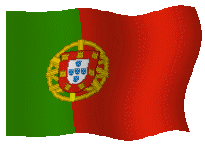
THE HOME WINE COURSE ©

Introduction:
The small maritime nation of Portugal is a large producer of wine; sixth overall worldwide. However, most Portuguese wine is consumed at home, evidenced by the astounding statistic that the Portuguese are the third largest wine-consuming nation on earth! The intensely sweet, long-lived wine simply referred to as Port stands alone as Portugal's claim to international fame, but inroads have been made by energetic new Portuguese vignerons to bring to the world high quality cooperative and estate-bottled dry table wines. The best of these modern-era wines are reds from the central Douro River region, the Dão highlands district, and the Barraida central coastal district. The best whites are made in the northeastern Vinho Verde district.
(1) Vinho Verde
The Vinho Verde district is found in the Minhos province of Portugal located in the extreme northeastern quadrant of the country bordering with Spain. It is a large area accounting for fully 20% of Portugal's wine production. Although the name vinho verde is rightly translated as green wine, approximately 50% of Vinhos Verdes are red, although very few of the reds ever leave Portugal. Several grape varietals are utilized in the low-alcohol white Vinhos Verdes, including Avesso, Azal Branco, Trajadura, Paderná, and Loureiro. These are responsible for the spritzy, green apple-flavored whites that are so refreshing during summertime as an aperitif or with shellfish. The richest of white Vinho Verde wines is made with the spicy, full-flavored Alvarinho grape. These wines are more expensive but are well worth seeking out as they represent Portugal's finest dry white wine.
Tasting Notes:
(2) Dão
The Dão district is located in the north central highlands of Portugal just south of the more famous Douro (Port) region. Vineyards are planted along the valleys of the Alva, Mondego, and Dão Rivers. 38,000 acres are planted to mostly red grape varietals known quite well by Port vintners to the north. These include Touriga Nacional and Bastardo, with a local favorite called Jaen (reminiscent of Pinot Noir) rounding out the blend. The vinhos maduros (matured in barrel) wines of the Dão are the most exciting dry reds of Portugal with the best comparable in weight and flavor to fine Côtes de Nuits Burgundy. Reserve-level, single-vineyard (called quintas) Dãos are now being exported abroad, greatly enhancing the lowly image of Portuguese table reds. Quality dry whites made with the Arinto and Verdelho varietals are more rare but can be found on occasion.
Tasting Notes:
(3) Barraida
West of the Dão district and south of the town of Oporto along the Atlantic coast is the fine wine region called Barraida. The soils here are less granitic and the climate is milder due to maritime influences. This allows perfect ripening of the rare red grape varietal known as Baga which is responsible for the truly remarkable, almost Bordeaux-like, breeding of Barraida reds. These wines need time to develop and after judicious time in barrique will offer excellence at quite modest costs. A highly aromatic, deeply-flavored white is produced in the Barraida region made with the Bical varietal but you'll probably need to travel to Portugal to taste it. Top producers of red Barraida wines include Luis Pato and Aliança.
Tasting Notes:
(4) Douro (dry)
The Duero River (as it is called in Spain) originates far to the east of the Spanish border with Portugal but eventually crosses the border as the Douro River and empties (after a tortuous twisting journey) into the Atlantic at the town of Oporto. The grapes here are the Touriga Nacional, Souzao, Bastardo, and Mourisco Semente. The savory dry reds now made with these grapes are quite satisfying in a mid-weight, softly tannic style. Port producers typically drink dry Douro reds with their meals followed by a sweet Port wine to end the repast. The most famous of Portuguese dry reds, equal in stature to Spain's Vega Sicilia, is the Douro wine called Barca Velha made by Port producer A. A. Ferreira.
Tasting Notes:
(5) Douro (sweet) Port
The darkly-colored, sweet, brandy-fortified wines of the Douro are certainly the most well-known wines of Portugal. They are perhaps the most misunderstood wines of Portugal as well. 95% of Port is red with the odd white Port occasionally seen. The reds are made with the same varietals listed in the dry wines of the Douro. Many styles are produced but the two primary divisions are between the fruitier ruby Port and the slightly drier, more tannic tawny Port. Higher quality (and more expensive) ruby Ports are designated as proprietary house blends (like Warre's Warrior or Fonseca Bin 27) or declared as single-vintage Port (top vintages include '63, '66, '77, '85, '91, '92, '94, '97, '00, '03, and '07). Higher quality tawny Ports (made tawny through extended barrel-aging) are usually designated by a specific age statement (ie. 10, 20, or 30-year old). In-between styles are made, including late-bottled vintage Port and colheita Port (both of which are vintage Ports aged for longer than the two-year ruby Port minimum barrel-aging rule). Colheita Ports are only made in above-average years however and usually are aged in wood longer than late-bottled vintage Ports. Port is almost always consumed after meals; excellent with either chocolate or berry-flavored desserts. It works remarkably well with blue-veined cheeses and walnuts as well.
Tasting Notes:
